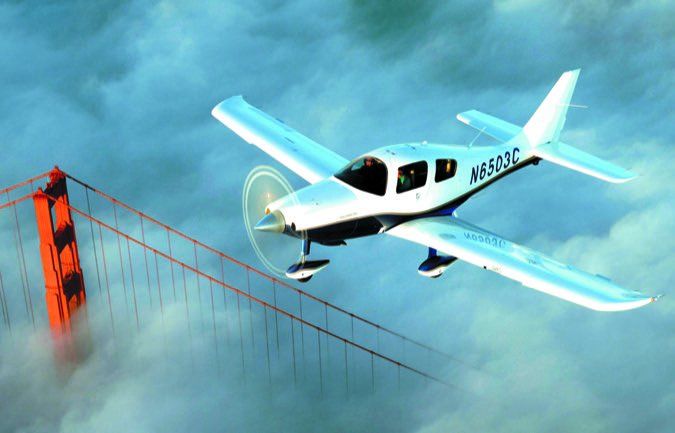The original Lancair Columbia was a lot of things, and in some ways helped set a new standard that lives on to this day. First, it was one of the new-generation singles spawned by NASA’s AGATE (advanced general aviation transport experiments) program and promised growing small aircraft use in intercity transportation. That concept also brought forth the Cirrus SR20 and SR22, which proved far more popular and ultimately outlived the retired Columbia.
But equally important to the airplane’s target buyers was its speed, modern composite design, state-of-the-art avionics and the fact that it was boldly different than any Cessna, Beech, Mooney or Piper. Further to its credit, a normally aspirated 300 and 350 will outrun a Cirrus SR22 by roughly 10 knots.
But the airplane did have some disadvantages that might be significant to buyers who are eyeballing remaining Columbias on the current used market. Although both the Columbia 300 and earlier SR22s have identical empty and maximum gross takeoff weights, according to the Aircraft Bluebook the 300 gives up 150 pounds in full-fuel payload to the SR22, because its tanks are larger. It’s a little more sensitive in loading, too, and perhaps a deal-breaker for some-it lacks the Cirrus’ airframe parachute system.
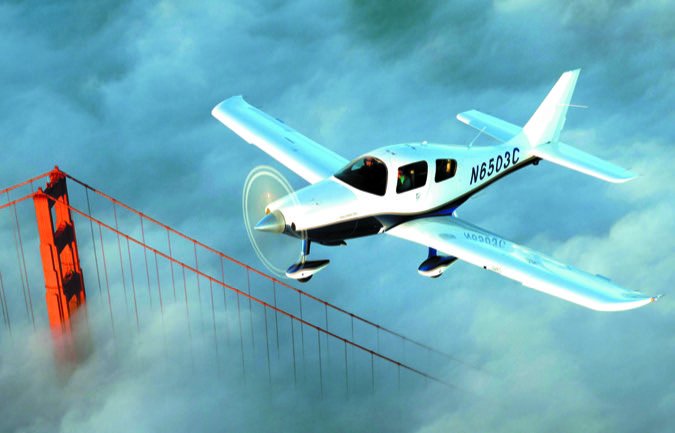
Kitplane DNA
To fully understand the basic concept of the Colombia models, you need a history lesson that dates back to the experimental kitplane Lancair days. Founded by Lance Neibauer in 1981 as a producer of composite homebuilt aircraft kits, Lancair fielded its first offering in 1985. The kitbuilt Lancair 200, powered by a 100-HP Continental O-200, quickly grew popular and was followed by higher-horsepower versions of the same basic two-seat airframe. In 1990, Lancair began developing a four-seat model, coming up with what is perhaps the company’s most popular kit, the Lancair IV, a retractable-gear screamer. A fixed-gear version soon followed, known as the Lancair ES. Those two kit-built four-seaters served as a foundation for the LC40 model, also known as the Columbia 300. But before the LC40 model arrived, NASA launched AGATE in 1994, which was designed to breathe life into a deflated general aviation market. Huge liability claims had rendered the industry unprofitable a decade earlier, although the higher-end market for turbine-powered aircraft was doing OK, if not thriving. In fact, the only bright spot for piston-powered GA was in the homebuilt, experimental market, where liability issues were minimal.
Lancair had become a prominent player in that market, and NASA, among others, encouraged development of an FAA-certified aircraft. In 1993, Lancair spun off a new company, Pacific Aviation Composites USA (PAC), in nearby Bend, Oregon, to manufacture certificated aircraft. The first Lancair LC40 prototype flew in July 1996; a certification prototype followed in early 1997 but the 310-HP model wasn’t certified until 1998. That same year saw Cirrus obtain FAA approval of its SR20, with “only” 200 HP but with an airframe parachute and much more of an organization behind it.
The Cirrus product took off, soon followed by the 300-HP SR22 in 2000, providing real competition for the LC40-550FG, as the 300 is formally known.
The turbocharged fire-breathing Columbia LC41-550FG/400 came out in 2000 also featuring a glass cockpit developed in part on NASA’s own Columbia 300. That same panel was incorporated into the 300 airframe/engine combination, which became the LC42-550FG, or Columbia 350, type certificated in March 2003.
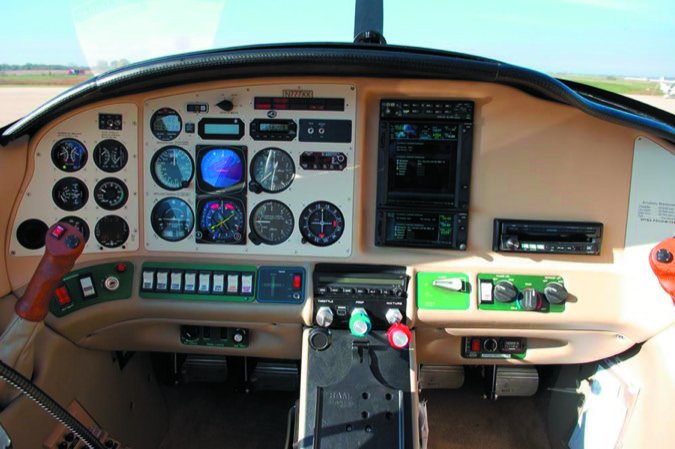
But financing issues plagued PAC. After Sept. 11, 2001, its certified-airplane production ceased while the company sought investors. In January 2003, manufacturing resumed after Composite Technology Research Malaysia (CTRM) bought a controlling interest in PAC for over $50 million. By 2006, CTRM became interested in selling its share of the company.
In July 2005, Neibauer had sold his interest in the kitbuilt models and PAC became Columbia Aircraft. Despite having what most owners felt was a good product, Columbia couldn’t overcome what many perceived to be an unsteady history. That reputation, plus withering competition from Cirrus, forced Columbia into bankruptcy in 2007, culminating with its acquisition by Cessna in November 2007.
Cessna, after offering the 300 and 350, produced a single version of the once Columbia 400, the TTx. It was powered by a Continental TSIO-550-C six-cylinder, fuel-injected, twin-turbocharged engine with dual intercoolers-boasting a 235-knot maximum cruise speed. It also had Garmin’s G2000 Intrinzic touch avionics suite and a price north of $800,000. Textron ultimately pulled the plug on the TTx in 2018, leaving the market speculating on the future of the company’s piston single line.
Construction, Styling
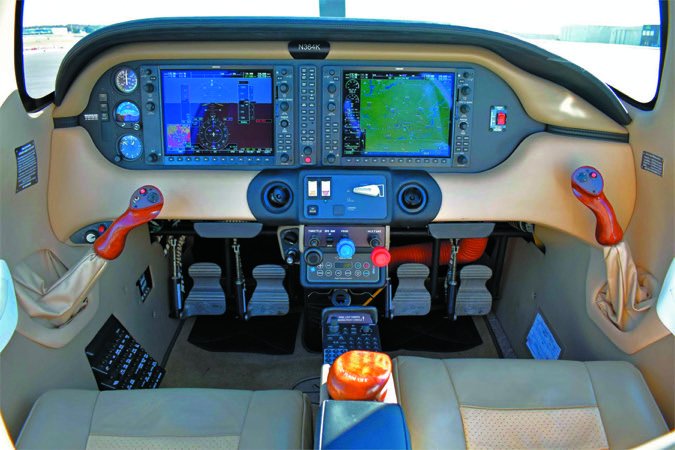
Because it was certified under the relatively new FAR Part 23 (at the time), some of the Columbia’s features, systems and limitations may not be familiar to pilots steeping into it compared to all-metal airplanes of an earlier era. For the Columbia 300/350, the fuselage shell, wings and most control surfaces are a honeycomb sandwich of pre-impregnated-or “pre-preg”-fiberglass around a honeycomb interior. “Pre-preg” means the fiberglass cloth is impregnated with catalyzed epoxy resin. Air pressure fixtures clamp the layers together during heat curing, while a thin wire mesh just beneath the skin provides lightning protection and enables IFR certification, heretofore a composite bugaboo.
Structural components such as ribs, bulkheads and spars are constructed in the same manner. Where additional strength is needed, such as in spars, carbon fiber is added to the honeycomb sandwich. The result is a strong, light airframe, certificated in the utility category instead of the less-demanding normal category. In fact, when the wing was loaded to demonstrate its strength, it exceeded FAA requirements. One of the changes from older certification rules contained in Part 23 is an airframe life limit. The Columbia models’ limits are 25,200 hours, which should be enough. (If you plan to fly one more than that, call us.)
Because of its composite construction, the airframe comes with some limitations. For example, the type certificate limits exterior colors-the same basic limitation was imposed on Cirrus models-and major repairs “must be accomplished by an appropriate FAA certified person qualified to perform maintenance on composite aircraft structure.” The wizened IA caring for your Skylane and whom you routinely include on your Christmas card list may not qualify.
Other limitations in the type certificate include a maximum operating altitude of 14,000 feet without an FAA-approved oxygen system installed, or 18,000 feet with one. Presumably, this applies even when a non-approved portable system is carried, though we’d be surprised if operators strictly adhered to it. If one wants to climb higher in a Columbia, the 400 is approved for up to FL250. Additionally, maximum zero fuel and minimum flying weights apply. The new TTx has the BiO2 four-place oxygen system.
Conventional Controls
With the exception of side sticks and a rudder limiter, the Columbia’s control system is a conventional design. Anyone familiar with a Cirrus will feel right at home. Ailerons and elevators are one-piece construction, incorporating rods and bellcranks, la Mooney. The left aileron includes a servo tab, which decreases control force and likely contributes to the ease of control with the side sticks. When Aviation Consumer flew an early Columbia 300 as the type was being rolled out, we noticed a slight breakout force to actuate the ailerons. We felt it initially disconcerting in turbulence, resulting in overcontrolling in the roll axis. Our pilot got used to it after a while.
The Columbia’s rudder also is of one-piece construction, actuated by cables running through plastic tubes. No pulleys are used, and there’s little discernible control friction. But it does include an item not usually found on light singles: a rudder limiter.
Because of the increasingly strict FARs on spin resistance, the limiter snaps on when power is above 12 inches of manifold pressure and after the stall warning has sounded for two seconds. The limiter restricts rudder travel to six degrees either side of center, rather than the normal 12 degrees.
This is effective in preventing spins. In the wild old days, rather than go to the trouble of performing additional testing and design work to certify for spins, manufacturers merely slapped on a placard prohibiting spins. Not any more.
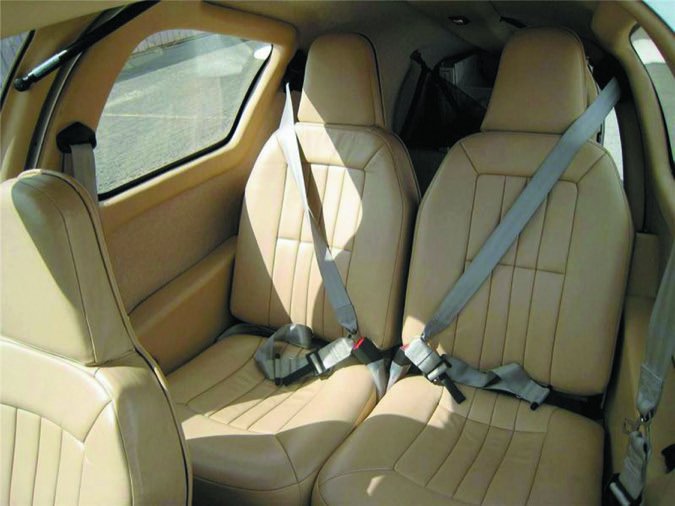

One thing our evaluation pilot thought was clever is the airplane’s roll and pitch trim system: It’s all-electric, with no manual reversion, and actuated by a coolie hat atop the side stick. Rudder trim is controlled by a switch on the lower center panel, with a graphic display of blue and green lights showing trim tab position. Prior to takeoff, the various switches are moved until the trim lights show only green. Once a trim tab has been moved from the takeoff position, the respective light turns blue so the pilot can see not only how far off center it is, but has a quick reference by color once the tab is back to the takeoff position.
A major difference between the Columbia 300 and the 350 is avionics and gyro power. The earlier 300 models had dual vacuum pumps. Standard equipment included steam gauges in front of the pilot, with a rack of UPS-AT avionics (pre-Garmin units) for talking and squawking. A pair of Avidyne multi-function displays (MFDs) were available options; when installed, they were positioned right-center in the early panels.
All that changed when the 350 came out, using the 400’s systems and panel. For one, it was an all-electric airplane, with a dual bus, dual alternator/battery electrical system eliminating the twin vacuum pumps in the Columbia 300. Continental’s FADEC (full authority digital engine control) engine management system, employing a single lever to control power, mixture and the propeller, was available as an option.
All Columbia 300s are 14-volt airplanes. The 350 started out that way, but the company went to 28-volt systems in 2005, beginning with serial number 42501. In keeping with Lancair’s original emphasis on speed, exterior airframe surfaces are smooth as silk. Among other things, this means flush fuel filler caps similar to those used on Lancair homebuilts, which have proved problematical on other types. Basically, flush caps don’t do as good a job at keeping water out of the tanks, something to bear in mind if your airplane will be left out in the rain.
Fuel capacity is a generous 106 gallons total, with 102 usable, carried in a wet wing, between the spars, so it’s reasonably well protected in a crash and quantity doesn’t affect the center of gravity.
Fuel lines run to the selector valve under the center of the fuselage, in front of the forward wing spar. From a crashworthiness standpoint, the lines are exposed for only a few feet in front of the spar. The fuel valve’s selector handle forms the forward portion of the armrest between the front seats. It’s shaped to make it clear to which tank the valve points, making it one of the better human-factor designs we’ve seen.
The wings include conventional Fowler flaps, with settings for takeoff and approach (12 degrees, with a 129 KIAS limit) and landing (40 degrees, limited to 119 KIAS). To meet certification requirements, the flap extension speeds are painfully slow for an airplane cruising at over 180 knots, which means either large power reductions are necessary to slow down after a descent, the pilot really needs to plan ahead, or both. Some individual aircraft may be equipped from the factory with optional speedbrakes, or they may be added in the field. While we generally can do without speedbrakes, they’re not a bad idea on the Columbia models.
To many pilots, high performance means retractable gear and we suspect some wouldn’t be caught dead owning an airplane unless the gear folds up (that crowd generally wouldn’t own composites, either). On that count, the Columbia scores low on the macho scale, with its fixed tubular steel gear. Due to the one-piece wing, the gear attachment to the fuselage is well aft, with the legs extending forward.
The nosegear is free-swiveling through 120 degrees but self-centers in flight. Taxiing requires differential braking, of course, as it does with Cirrus models and many others. While overheated brakes on earlier Cirrus models have caused fires and at least one airworthiness directive, we’re not aware of any similar problems among the Columbia fleet.
Avionics, Cabin
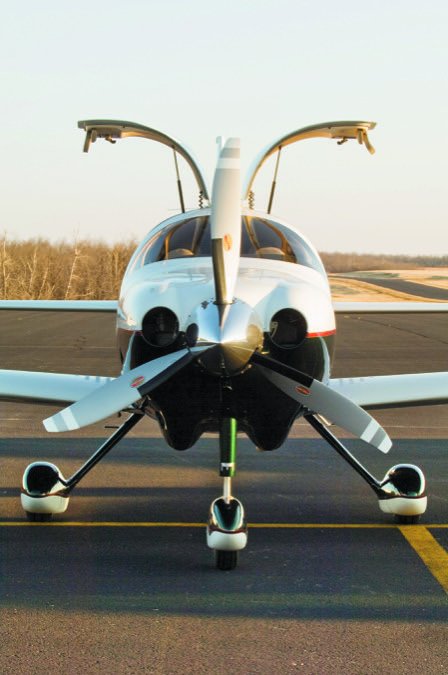

The Columbia’s clean-sheet-of-paper approach to instrument panel design resulted in one stunningly free of clutter, at least when compared to earlier, more traditional designs. As with the Cirrus, there are no bulky yokes to block the panel’s view. Our flight tester found switches were well-placed and labeled, with one exception.
That exception involves the circuit breakers, which are located low on the left cabin sidewall in front of the pilot’s seat. The panel is difficult to see and the labels are almost impossible to read without a head-down motion bound to induce vertigo when you can least afford it.
Overall, though, the interior is of the sort you’d expect to see in this class of airplane. It has leather seating, teak control sticks and an attractive and functional three-point restraint system. The cabin is physically small and the headroom is a bit tight for a tall person. Fit and finish were good, at least in a new, immature model. And, while we’re positive a few years of use will take its toll on older airplanes, the results can’t be as bad as older offerings from the Big Three. Early in the Columbia 300’s production, three avionics options were available. The standard IFR package included an UPS-AT SL30 navcom, SL70 transponder, GX60 GPS, SL15 audio panel, Stormscope and an S-TEC System Thirty autopilot with altitude hold. The premium IFR package included dual SL30s, SL70 transponder, GX50 GPS, SL15 audio, Stormscope, AlliedSignal KCS 55A HSI System and a KI 256 Flight Director. These avionics are considered dated by today’s standard, we should note. Rip all of that out for a generous aftermarket glass retrofit, new navigators, a better autopilot, plus ADS-B and you could be looking at an investment that nears $100,000. Buyers of early models should keep this reality in check.
The third original option was a basic avionics package appropriate only as an interim solution until an owner obtained a custom installation. As noted above, some buyers also opted for dual MFDs.
When the 350 and its all-electric panel rolled out, gone were the steam gauges. In their place was the Columbia 400’s all-glass panel, based on the Avidyne FlightMax Entegra primary flight display (PFD) and using dual Garmin GNS430 navigators. Technically an option on the 350, it was one nearly every buyer selected. A major difference between the Columbia’s FlightMax installation and the same PFD in contemporaneous Cirrus models was its orientation: Columbia aircraft have the display mounted with the long axis vertically, in portrait mode, rather than horizontally as in the offerings from Cirrus.
As for crashworthiness, The Columbia 300/350 scores well on safety and crashworthiness, in our view, with good seatbelts, a crushable structure and energy-absorbing foam seats. That said, we’re not fond of gullwing doors, hinged at the top and opening upward, common to Columbia and Cirrus models. They expose the interior to rain during entry and exit and they’ve never struck us as being as structurally robust as conventional doors. Columbia doors have a redundant limited for a tall person. Fit and finish are good, but we’re positive that years of use have taken their toll on older airplanes, even though the results can’t be as bad as older offerings from the Big Three.
Early in the Columbia 300’s production, three avionics options were available. The standard IFR package included an UPS-AT SL30 navcom, SL70 transponder, GX60 GPS, SL15 audio panel, Stormscope and an S-TEC System Thirty autopilot with altitude hold. The premium IFR package included dual SL30s, SL70 transponder, GX50 GPS, SL15 audio, Stormscope, AlliedSignal KCS 55A HSI System and a KI 256 Flight Director.
These avionics are considered dated by today’s standards, we should note. Rip all of that out for a generous aftermarket glass retrofit, new navigators, a better autopilot, plus ADS-B and you could be looking at an investment that nears $100,000. Buyers of early models should keep this reality in check. Most of the early Columbias we spotted on the used market have mostly been upgraded. A common package includes Garmin GTN navigators (usually a big-screen GTN750 and smaller GTN650), upgraded audio system and in some cases a primary flight display.
The third original option was a basic avionics package appropriate only as an interim solution until an owner obtained a custom installation. As noted above, some buyers also opted for dual MFDs.
When the 350 and its all-electric panel rolled out, gone were the steam gauges. In their place was the Columbia 400’s all-glass panel, based on the Avidyne FlightMax Entegra primary flight display (PFD) and using dual Garmin GNS430 navigators. Technically an option on the 350, it was one nearly every buyer selected. A major difference between the Columbia’s FlightMax installation and the same PFD in contemporaneous Cirrus models was its orientation: Columbia aircraft have the display mounted with the long axis vertically, in portrait mode, rather than horizontally as in the offerings from Cirrus.
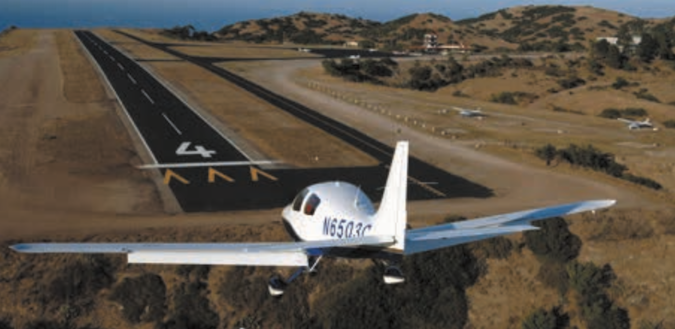

As for crashworthiness, the Columbia 300/350 scores well on safety and crashworthiness, in our view, with good seatbelts, a crushable structure and energy-absorbing foam seats. That said, we’re not fond of gullwing doors, hinged at the top and opening upward, common to Columbia and Cirrus models. They expose the interior to rain during entry and exit and they’ve never struck us as being as structurally robust as conventional doors. Columbia doors have a redundant latching system designed to keep them closed in flight and there’s a door ajar light.
Should the airplane come to rest inverted, there’s an emergency lever at top center of the cabin interior to pull hinges out of both doors, allowing them to be pushed out. For the rescuer, there’s also a lever on the underside of the aircraft, with a placard telling how to pull the lever and get the doors open.
It’s likely that most inverted situations will mean the airplane is on its top and one wingtip, so one of the doors should open without extraordinary effort. The placard tells a rescuer what to do if the airplane is balanced on the top, precisely inverted, although uneven ground may defeat any attempt to open a door.
As a backup, a crash axe under the front of the pilot’s seat gives the occupants a tool to chop their way out. In a test, a small person from the factory was locked in an inverted fuselage and given instructions to get out. She retrieved the axe and battered her way out within a minute.
Both Columbia models have a maximum gross takeoff weight of 3400 pounds, same as the Cirrus SR22. With a basic empty weight of 2250 for both the SR22 and the Columbia 300, the only real difference in loading the two is full-fuel payload and how it all gets balanced. Meanwhile, the 350 weighs a bit more-2300 pounds empty-so its useful and payload are down about 50 pounds compared to the other two airplanes.
Also, the Columbias come with a maximum landing weight of 3230 pounds. That means just over 28 gallons of fuel-or roughly an hour at takeoff settings-will have to be burned following a gross weight, full-fuel departure before a landing may legally be made. This, combined with a maximum zero fuel weight that varies with CG, means the pilot will have to pay attention to loading, perhaps more carefully than with other models. Few single-engine owners are familiar with the zero fuel weight concept, which means that any additional weight above a certain minimum must be fuel only.
In working several sample weight and balance problems with an early 300, we noticed it’s quite easy to load the airplane out of its aft CG limit. For example, with four 200-pound occupants and 120 pounds of baggage, the same plane was over its max landing weight without any fuel. It was a more than two inches aft of the CG limit.
With just two 200 pounders, 50 pounds of baggage and full fuel, the airplane we flew was loaded at the center of the CG range. Admittedly, our sample airplane was heavy-it had a 2337-pound empty weight and only a 1063-pound useful load.
Before signing on the dotted line for a used Columbia-or any aircraft, for that matter-run a few weight and balance problems using the candidate airplane’s POH to see how it stacks up on your typical missions.
There are a handful of Airworthiness Directives (ADs) pertinent to both the 300 and 350 models. The most recent is AD 2008-06-28, now in its first revision, applying to Avidyne primary flight displays (PFDs) by serial number and may require incorporating new limitations when certain conditions involving incorrect attitude, altitude and airspeed information for the PFD or backup instruments exist.
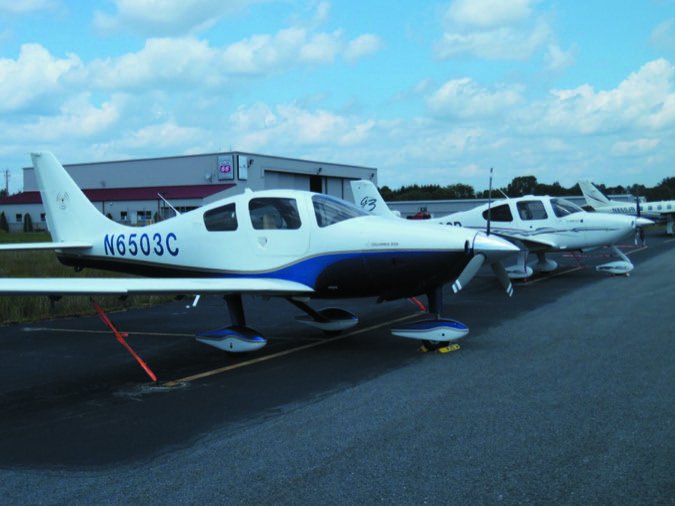

Meanwhile, AD 2007-07-06 applies to all Columbia models and requires repetitive inspections of aileron and elevator linear bearings, and control rods, for foreign object debris, scarring or damage to prevent a jammed control system. This is probably the most onerous AD affecting Columbias.
Another AD, 2006-25-08, requires deactivation of Kelly Aerospace Thermal Systems’ ThermaWing Deice System (also known as E-Vade) if installed on Columbia 350s (and 400s). Some owners are opting to remove the ThermaWing system and have TKS installed. We looked at these deicing systems in the February 2017 issue of Aviation Consumer.
Also, there’s AD 2005-02-01, which applies to 300 and 350 models and requires revising takeoff chart distance values in the Airplane Flight Manual (AFM). Post-certification flight testing revealed takeoff distance values could not be duplicated and were as much as 65 percent shorter than required. Finally, AD 2004-06-09 requires inspecting 300 and 350 models’ fuel pressure transducer for evidence of chafing. A compliance kit may be installed to terminate the AD.
Once Cessna took ownership, a major unknown with the in-service Columbia fleet created by ongoing financial uncertainty was resolved.
In December 2010, a Cessna 400 being flown by an FAA test pilot at the factory developed a fuel leak that was later determined to be related to the wing skin disbonding from the main spar. The issue produced an AD that only applied to one 350 on the production line and seven 400 models, also on the line.
Columbia 300/350 Losses: Control
We had to do some looking to find accidents involving the Columbia 300/350 series. While there weren’t a lot built, few of those that rolled out of the factory door have crashed-we found 11 reported accidents in the U.S. over the last 25 years. That’s certainly not enough to even approach a statistical universe for analysis, but we were struck by one thing that we did not see: There were no fuel-related accidents-even where there are only a few accidents involving a type, we expect to see at least one fuel-related crunch. To us that means that the Columbia has a user-friendly fuel system that accurately indicates quantity aboard.
There was only one engine failure accident, although it was a bad one. The pilot reported a power loss and then smoke in the cockpit before communication was lost and the airplane crashed fatally. Post-accident analysis of the recorded engine data showed that the engine was steadily losing oil pressure by the top of climb. The pilot apparently disregarded low oil pressure warnings and did not follow the POH admonition to land as soon as practical.
There were four runway loss of control (RLOC) accidents, which struck us as high, although we felt for the pilot who hit two Canada geese on, or immediately after, touchdown and lost control of the airplane. Reading between the lines of the remaining RLOC and hard landing accidents we think that speed control on final is important in a Columbia-extra speed is not a Columbia pilot’s friend. Two pilots lost control when landing in crosswinds-one after hitting a dust devil and one when he didn’t react fast enough to a gust to avoid turning 90 degrees off of the runway and breaking the nosegear off in a ditch.
The other RLOC accident involved a 2800-foot-long mountain-top runway. Following a fast touchdown a third of the way down the strip, the airplane started bouncing, reaching an estimated 30 feet AGL during one. The airplane then left the runway and started down an embankment before turning back, crossing the runway and crashing into four parked airplanes. A post-crash fire resulted in the death of the occupants and destruction of three of the five airplanes involved.
One Columbia pilot was curious as to where he would touch down if he followed the GPS approach all the way to the runway surface. He hit hard, suffered a prop strike and broke the nosewheel off. He then rotated aggressively enough to hit the tail on the runway and started a go-around. The airplane did not climb significantly before hitting storage containers a half mile off the end of the runway.
Another pilot landed fast and hard, damaging the landing gear and causing fuselage components to deform downward.
There was, sadly, one VFR into IMC event in fog. The aircraft spiraled into a lake.
Two pilots had difficulties flying VFR at night. One crashed into the side of a mountain. The other lost control shortly after a “black hole” takeoff from a rural airport and spiraled into the ground. The pilot had 24 hours of night experience, mostly in urban areas, and had not flown at night for 11 months. Despite that, he was carrying passengers.
Finally, shortly after takeoff, a Columbia pilot noticed that a carpet strap was hanging out of the door on his side. Despite strong warnings about not opening a door in flight in the POH, he opened it. The door was violently pulled out of his hand, injuring him enough to require stitches. The door then departed the airframe. In doing so it damaged the wing and horizontal stabilizer. The pilot was able to successfully land the airplane.
Owner Comments
Purchased in 2014, my 2003 Columbia 350 is my first aircraft after 50 years of rentals. My mission revolved around speed, economy, payload and fuel capacity. Having rented a 2007 Cirrus SR22T for seven years it became obvious that a more complex 40-year-old aircraft did not meet my traveling requirements. Both the Cirrus and Columbia exhibit similar operational qualities and I like them both, but being more familiar with the Avidyne integrated avionics and an aircraft without a turbo, my choice also became price dependent.
Since 2014, N6503C (once a factory demo) has flown 700 hours (virtually all IFR) and I usually operate at full gross weight on flights roughly four hours in length between 10,000 and 12,000 feet. I operate at roughly 61 percent power LOP and see 163 knots and 12.3 GPH. While operating in the Western mountains, the highest practical altitude is 14,000 feet due to power limitations in turbulence, mountain waves, subsidence and high density altitudes. When flying solo, an endurance of seven hours is possible for those hearty souls.
Unlike the Cirrus, the Columbia has speed brakes-useful during those descents over mountains into valley airports. Occasionally ATC thinks jet-like performance, leading to steeper high-speed descents; thankfully speed can be managed by the brakes. (I found the Cirrus propeller has a more effective braking area with power retarded.) The side stick control has smooth, light/moderate forces and the aircraft’s handling is excellent at low and high speeds, with chandelles and lazy eights fun to fly.
The original avionics included an Avidyne FlightMax Entegra PFD/MFD and dual independent Garmin GNS430 navigators. Both round gauge and electronic engine monitoring systems are redundant, yet useful for fuel and electrical system management.
My upgrades included two Garmin GTN650 navigators and a GDL88 ADS-B system. I appreciate the Garmin touchscreens, the ADS-B weather and traffic data and compatibility with the ForeFlight app. For me, this arrangement provides a comprehensive and redundant information capability that exceeds the legacy G1000 system’s capability, which was introduced in 2004.
If I had to replace the Avidyne displays, I would consider installing the new Garmin G500 TXi displays as an improvement.
History has it that as a Columbia demonstrator aircraft, a prospective buyer experienced a hard landing in my airplane. The right landing gear, wing and stabilizer were damaged by the mishap. The Columbia production facility replaced the right gear, right wing and stabilizer. For me, through five annual inspections and 700 hours of flight, the aircraft flies true to the book, while maintenance has been for normal wear and time-dependent replacement items. This Columbia has been a very reliable aircraft.
My experience during annual maintenance was either reluctance by a Cirrus service center to get involved with this different airframe or “working on this is not a problem,” treat the aircraft with all the standard maintenance procedures. I experienced both. I finally convinced the service center to perform the most recent annual by buying the maintenance manual.
The result: The shop found some new stuff to replace (first-time expenses) but they considered the airplane easy to maintain with no unusual systems. I am pleased, but Cessna Textron part costs are questionable. For example, a muffler cost $2600.
As for approximate annual operating costs (not including engine reserves), I plan on $140 per flight hour for this airplane. That includes hangar costs, oil and general “fix it” stuff. Insurance is $2300 per year, the annual inspection base price is around $2500 and fuel (at around $5.50 per gallon at 12.5 GPH) is $9625.
For me, the Columbia 350 encompasses operational economics, advanced design and modern electronics that are often regarded as more advanced than many commercial airliners.
It is too bad that Columbia-and now Cessna-was injured by economic conditions that forced it into receivership. I think it was about marketing, not quality or performance.
Philip G. Potts
via email




